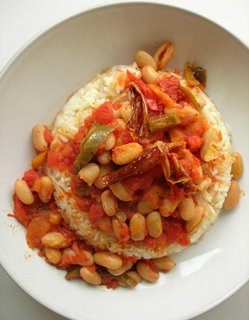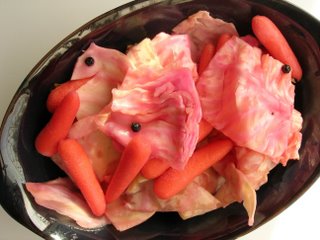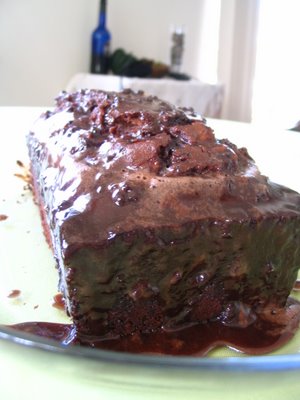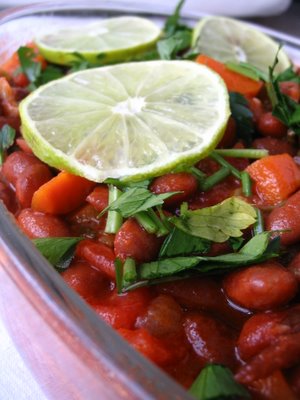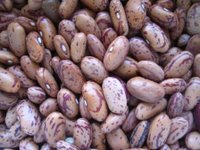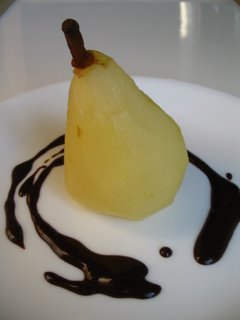
If you want this to be a vegetarian stew, all you need to do is to skip the meat part.
lamb, diced. Use as much meat as you want 1/2 pound or 1 pound (you can also substitute lamb with beef or use half lamb + half beef)
1 big onion, chopped
3-4 cloves of garlic
1 carrot, chopped in rounds
1 eggplant (not a huge american one though), peeled in striped pattern and diced
1 zucchini, diced or cut in half rounds (or summer squash or both)
1 or 2 potatos, diced (depends on how much you like potato)
1/2 pound (or less) green beans
1 can of green peas (or frozen ones)
3-4 banana or any kind of peppers, chopped
1/4 cup olive oil (or butter)
1 tbsp pepper or tomato paste
1 can diced tomatos or dice 3 fresh tomatoes
salt & black pepper (or pepper corns)
crushed pepper
optional:
mushroom
dried mint
parsley or dill
dark beer
-Chop all the vegetables and pick the biggest pot you have
-Cook the lamb with a little bit oil on medium heat. Lamb/beef will relaease water. Cook until water is (almost) soaked
-Add the rest of the oil and pepper paste. Stir for an other 3-4 minutes.
-Make a layer of everything you chopped in this order: onion, garlic, pepper, mushroom, carrots, green beans, eggplant, zucchini, potato, and green peas.
-If you want to add beer or bourbon to your stew, now it's a good time. Dark beers, such as Guiness, would go well with this stew. Depending on the size of your pot, you can pour a whole bottle or half. Be more moderate with bourbon.
-On top of everything pour tomatoes and add hot water. Water level should be 1/2 inch below the surface.
-Add salt & pepper, mint, parsley or/and what other spices you want.
-Bring to a boil and then turn it down to low. Place a flat plate (something that fits in the pot) to press the vegetables down.
-Cover and seal the top of the pot with aluminum foil good and tight, and put the lid on.
-Cook on very very low heat for at least 2, at most 3 hours. You don't need to stir or check on it during those long 3 hours.
PS: You don't have to use every single ingredient I listed except egglant; lamb and eggplant are great together. Use whatever you have in the fridge.













